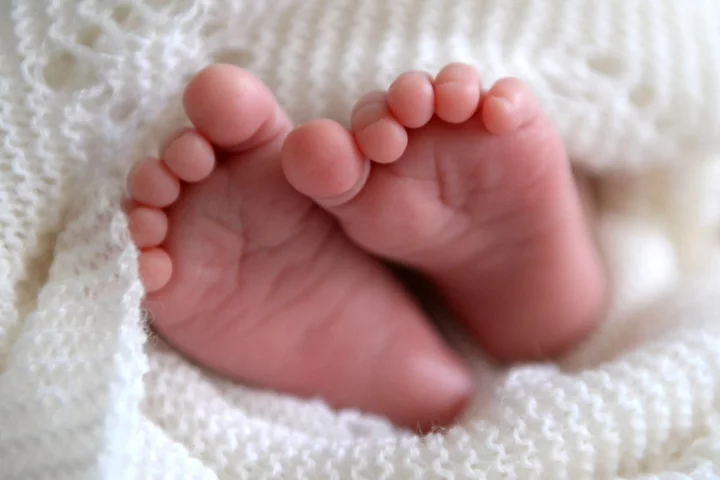
Regular napping could be good for brain health, research suggests
Regular daytime naps could be good for brain health, new research suggests. Daytime napping could slow the rate at which brains shrink as we age, the study led by researchers at UCL and the University of the Republic in Uruguay found. The researchers hope their findings into the health benefits of sleeping during the day will reduce any stigma that still exists around daytime napping. The study suggests the average difference in brain volume between people programmed to be habitual nappers and those who were not was equivalent to 2.6 to 6.5 years of ageing. Our findings suggest that, for some people, short daytime naps may be a part of the puzzle that could help preserve the health of the brain as we get older Dr Victoria Garfield, UCL Senior author Dr Victoria Garfield, MRC Unit for Lifelong Health & Ageing at UCL, said: “Our findings suggest that, for some people, short daytime naps may be a part of the puzzle that could help preserve the health of the brain as we get older.” The study, published in the journal Sleep Health, analysed data from people aged 40 to 69. Past research has suggested people who have had a short nap perform better in cognitive tests in the hours afterwards than those who did not nap. The new study looked at whether there was a causal relationship between daytime napping and brain health. Researchers looked at 97 snippets of DNA thought to determine people’s likelihood of habitual napping. They compared measures of brain health and cognition of people who are more genetically programmed to nap with people who did not have these changes in DNA, using data from 378,932 people from the UK Biobank study. They found that, overall, people predetermined to nap had a larger total brain volume. The genetic variants – DNA changes – influencing the likelihood of someone to nap were identified in an earlier study looking at data from 452,633 UK Biobank participants. But the researchers did not find a difference in how well those programmed to be habitual nappers performed on three other measures of brain health and cognitive function. Lead author and PhD candidate Valentina Paz, University of the Republic (Uruguay) and MRC Unit for Lifelong Health & Ageing at UCL, said: “This is the first study to attempt to untangle the causal relationship between habitual daytime napping and cognitive and structural brain outcomes. “By looking at genes set at birth, Mendelian randomisation avoids confounding factors occurring throughout life that may influence associations between napping and health outcomes. “Our study points to a causal link between habitual napping and larger total brain volume.” Garfield added: “I hope studies such as this one showing the health benefits of short naps can help to reduce any stigma that still exists around daytime napping.” Read More Charity boss speaks out over ‘traumatic’ encounter with royal aide Ukraine war’s heaviest fight rages in east - follow live Dramatic rise in the number of women freezing their eggs 9 glorious gardens to visit this summer How to keep flying insects out of your home
2023-06-20 16:50

Dramatic rise in the number of women freezing their eggs
There has been a dramatic rise in the number of women freezing their eggs in the UK, while more single people are now opting for IVF, new figures show. A report from the Human Fertilisation and Embryology Authority (HEFA) found that more people than ever before are undergoing procedures, with egg and embryo freezing now the fastest growing fertility treatments in the UK. Egg freezing and storage increased from 2,576 cycles in 2019 to 4,215 in 2021 (a 64% rise), while embryo storage also rose. Some experts have said the Covid-19 pandemic had a big impact on the numbers of women wanting to freeze their eggs in the hope of preserving their fertility. Restrictions on socialising may have prompted some women to think more about their fertile window, and decide to try to increase their reproductive choices Sarah Norcross, Progress Educational Trust Sarah Norcross, director of the Progress Educational Trust, said of the latest data: “The dramatic rise in the number of egg freezing cycles could be linked to the pandemic. “Restrictions on socialising may have prompted some women to think more about their fertile window, and decide to try to increase their reproductive choices.” The HFEA data also shows there was a 10% rise in IVF and donor insemination cycles between 2019 and 2021 (around 7,000 more cycles). Meanwhile, the average age at which women have fertility treatment with IVF has risen – to 36. This compares to an average age of almost 31 for women who conceive naturally. The regulator’s report shows that patients in heterosexual relationships accounted for around 90% of all IVF patients in 2021. Meanwhile, the number of IVF patients in female same-sex relationships increased from 1,649 in 2019 to 2,201 in 2021 (a 33% rise) and single parents rose from 2,001 in 2019 to 2,888 in 2021 (a 44% rise). This means that single patients and patients in female same-sex relationships had the biggest increase in IVF use from 2019 to 2021. When it comes to success in getting pregnant using own eggs, the average overall IVF pregnancy rate using fresh embryos increased from 10% per embryo transferred in 1991 to 29% in 2021. Patients aged 18 to 34 had the highest pregnancy rate per embryo transferred at 41% in 2021. Meanwhile, pregnancy rates per embryo transferred increased from 8% in 1991 to 33% for patients aged 35 to 37, and was 25% for patients aged 38 to 39 in 2021. For patients aged 40 to 42, the pregnancy rate per embryo transferred increased from 6% in 1991 to 16% in 2021. Our report shows that the average age of IVF patients has increased to 36, around five years older than mothers who get pregnant naturally and these aftershocks could mean that the average age of an IVF patient continues to rise Julia Chain, HFEA For patients aged 43 to 50, the pregnancy rate per embryo transferred increased from 1% in 1991 to 6% in 2021. Live birth rates per embryo transferred have increased from 7% in 1991 to 25% in 2021 for patients aged 35 to 37 and from 6% in 1991 to 17% in 2021 for patients aged 38 to 39. For those aged 40 to 42, the live birth rate per embryo stands at 10%, but plummets for women aged 43 and over. Meanwhile, the average IVF pregnancy rate using frozen embryo transfers has increased from around 7% in the 1990s to 36% in 2021. The average IVF birth rate using frozen embryo transfers also increased from around 6% in the 1990s to 27% in 2021. Julia Chain, chairwoman of the HFEA, said: “Overall, the new HFEA report paints a promising picture. It shows treatment numbers are back at pre-pandemic levels and thanks to improved clinical and laboratory practice, over time pregnancy rates are increasing. “Despite the pandemic being declared officially over, the aftershocks are still being felt as delays across other areas of healthcare prevent some patients accessing fertility services. “Our report shows that the average age of IVF patients has increased to 36, around five years older than mothers who get pregnant naturally and these aftershocks could mean that the average age of an IVF patient continues to rise. “Although pregnancy rates have increased, the likelihood of success decreases with age. “For some patients, this may mean they never get the baby they hoped for and that’s heartbreaking.” More patients than ever before are paying privately for IVF. The number of IVF cycles funded by the NHS continued to vary across the UK with an overall 16% decrease to 20,000 cycles in 2021 from around 24,000 in 2019.
2023-06-20 16:49

Morocco media guide
An overview of the media in Morocco, including links to broadcasters and newspapers.
2023-06-20 16:29

Sir Elton John has created a new show for Glastonbury
Sir Elton John has told fans to expect the unexpected at Glastonbury.
2023-06-20 15:21

James Gunn 'blown away' by Superman Legacy auditions
DC Studios chief James Gunn has been "blown away" by auditions for 'Superman: Legacy' as the team look to cast the next Clark Kent.
2023-06-20 15:20

WIN SOURCE Makes its Mark at PCIM Europe 2023 with a Commitment to Sustainable Development
SHENZHEN, China--(BUSINESS WIRE)--Jun 20, 2023--
2023-06-20 14:49

6 hacks for handling the heatwave at a festival
With the heatwave stretching on this summer, festival-goers may be worried about handling the hot temperatures. The medical team at the Isle of Wight Festival said they saw fewer heat-related issues than expected, but there has still been a 15% rise in incidents since last year. With Glastonbury temperatures predicted to fall between 21 and 25 degrees, how can you make sure you stay safe? 1. Find shade – anywhere on the site When you see photos and videos of festival sites, it can look pretty exposed to the elements. “At festivals, seek shade in festival tents or near stages, or by going to bars… Even take a gazebo to go with your tent [if the festival allows],” says associate medical director of St John Ambulance, David Monk. When out in the field, take an umbrella or parasol if you are worried, Monk explains. And also, consider “wearing light layers and a cap”, he says. “Perhaps take a wet cloth to pop on the back of your neck, or wet the cap and wear it to cool you.” 2. Put sun cream everywhere “Make sure you wear a good head covering, at least SPF 30, and reapply regularly, so take it into the festival with you. When you get sweaty, it will need reapplying,” Monk explains. If you are dressing up in wild clothing, “apply sun cream before putting it on and reapply it, and make sure you take something to wear when it starts getting cooler”, he explains. “Put sun cream under make-up and glitter, and look at a sun cream spray for your scalp” – especially important if you don’t want to wear a hat. 3. Know what to look out for Knowing the signs of heatstroke and severe burns is vital. The main risks are sunburn, heatstroke and heat exhaustion. “Heat exhaustion is something you can self-treat by drinking lots of water or weak squash, and eating salty foods. If you think you have heatstroke, however, seek help from the medical teams,” Monk says. Signs include not sweating despite being hot, and a reduced level of consciousness, he adds. “If you get burnt, think how bad it is. If it blisters, you feel unwell or are shivering, seek help from the festival medical teams.” They should be fairly easy to find and signposted – ask around if you can’t see any. However, if it is less severe, just do lots of moisturising and rehydrating, he suggests. 4. Drink water and know how hydrated you are “Drink alcohol in moderation, and drink water alongside it. When you go to the loo, check how dark your urine is,” Monk suggests. This isn’t always possible in festival toilets, but you might detect darker and more dehydrated urine from its smell. 5. Pack the electrolytes When you sweat, you lose a lot of electrolytes, like salt. “Take an electrolyte drink with you – things like sports drinks, or Dioralyte, to replace whatever you lose,” says Monk. “Make sure you’re eating things with salt in, and carbohydrates, to give you energy.” 6. Keep an eye on drink and drugs “If people are going to take drugs, make sure those around you know what you have taken, in case they need to tell someone if there is a problem. Drugs and alcohol reduce your body’s ability to respond to the heat,” says Monk. Read More Charity boss speaks out over ‘traumatic’ encounter with royal aide Ukraine war’s heaviest fight rages in east - follow live Regular daytime naps could be good for the brain, study shows Meghan ‘set to sign’ Dior deal: 4 times she’s worn the brand Designer JW Anderson wears Irish rugby top on the runway
2023-06-20 14:45

Cambridge Broadband Networks Ltd. Africa and Tarana Announce Partnership to Equip Sub-Saharan Operators with Breakthrough Next-Gen Fixed Wireless
LAGOS, Nigeria & MILPITAS, Calif.--(BUSINESS WIRE)--Jun 20, 2023--
2023-06-20 14:25

Ending Nigeria's fuel subsidy pushes a shift to solar. Without a climate plan, progress is at risk
Nigeria's removal of a subsidy that helped reduce the price of gasoline has increased costs for people already struggling with high inflation
2023-06-20 14:18

World-Record Breaker, Business Leaders Missing on Titanic Tour
Five people are on board a submersible vessel that has gone missing in the North Atlantic during an
2023-06-20 13:52

Technip Energies Launches Canopy by T.EN™, Making Carbon Capture Accessible for Every Emitter
PARIS--(BUSINESS WIRE)--Jun 20, 2023--
2023-06-20 13:27

Oxford children's choir helps Ukrainian refugees 'not feel alone'
The group holds weekly session in Oxford for young refugees forced to flee their homes by war.
2023-06-20 13:20
